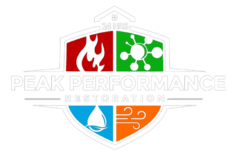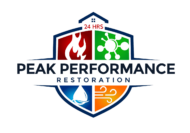Water damage can seem like a manageable problem, especially if it appears minor at first glance. However, one of the most significant and often overlooked consequences of water damage is mold growth. Mold thrives in damp, humid environments, and it can begin to grow within 24 to 48 hours after water damage occurs. If left unchecked, mold can pose serious health risks and structural damage to your property. Understanding the hidden risks of mold growth and knowing how to prevent it is crucial to safeguarding your home and health.
The Health Risks of Mold Exposure
Mold produces allergens, irritants, and in some cases, toxic substances known as mycotoxins. When mold spores are inhaled or come into contact with skin, they can cause a range of health issues. Individuals with allergies, asthma, or compromised immune systems are particularly vulnerable to mold exposure.
Common symptoms of mold exposure include:
- Respiratory issues such as coughing, wheezing, and shortness of breath
- Nasal congestion and sinus infections
- Eye, throat, and skin irritation
- Headaches and fatigue
In more severe cases, prolonged exposure to mold can lead to chronic respiratory conditions, such as asthma or hypersensitivity pneumonitis, a condition that causes lung inflammation.
Structural Damage and Mold Growth
Mold doesn’t just pose health risks; it can also cause significant structural damage to your property. Mold feeds on organic materials like wood, drywall, and insulation. Over time, this can weaken the structural integrity of your home, leading to costly repairs.
Mold can spread rapidly if the underlying moisture problem is not addressed. It can infiltrate walls, floors, and ceilings, often growing in hidden areas where it may not be immediately visible. By the time mold becomes noticeable, the damage may already be extensive.
Preventing Mold Growth After Water Damage
Preventing mold growth after water damage requires prompt and thorough action. The following steps can help mitigate the risk:
1. Act Quickly
Time is of the essence when it comes to water damage. Mold can start growing within a day or two, so it’s important to address the problem immediately. Begin by removing standing water and drying out the affected areas as soon as possible.
2. Dry Out the Affected Area
Use fans, dehumidifiers, and ventilation to dry out the area thoroughly. It’s important to reduce the humidity levels in the affected space to below 60% to prevent mold growth. If the damage is extensive, consider hiring professional water damage restoration services to ensure the area is completely dry.
3. Clean and Disinfect
Clean and disinfect all surfaces that came into contact with water. Use a solution of water and detergent to remove dirt and debris, then follow up with a disinfectant to kill any mold spores that may be present. Pay special attention to porous materials like carpets, upholstery, and drywall, which may need to be replaced if they have absorbed too much water.
4. Remove and Replace Damaged Materials
In cases of severe water damage, some materials may be beyond saving. This is especially true for porous materials, which can harbor mold even after they’ve dried out. Remove and replace these materials to prevent mold from taking hold and spreading.
5. Monitor for Signs of Mold
Even after the area has been dried and cleaned, it’s important to monitor for any signs of mold growth. Keep an eye out for musty odors, discoloration, or spots on walls, ceilings, and floors. If you notice any of these signs, it may be necessary to conduct a more thorough inspection or consult with a mold remediation professional.
6. Address the Source of the Water Damage
To prevent future mold growth, it’s essential to identify and fix the source of the water damage. Whether it’s a leaking pipe, roof damage, or poor drainage, addressing the root cause will help ensure that the problem doesn’t recur.
Importance of Professional Mold Remediation
In cases where mold growth has already occurred, professional remediation may be necessary. Mold remediation experts have the tools, knowledge, and experience to safely remove mold and restore your home to a healthy condition. Attempting to remove mold on your own can be dangerous, especially if the infestation is extensive.
Professionals can also identify hidden mold growth that may not be immediately visible, ensuring that all affected areas are treated. Additionally, they can provide guidance on preventing future mold growth, helping you to maintain a mold-free home.
Final Thoughts
Mold growth is a hidden risk that can have serious consequences if not addressed promptly. After water damage, taking immediate action to dry out the affected area, clean and disinfect surfaces, and monitor for signs of mold can help prevent this problem from escalating. By understanding the risks and following these prevention strategies, you can protect your home and your health from the dangers of mold.

